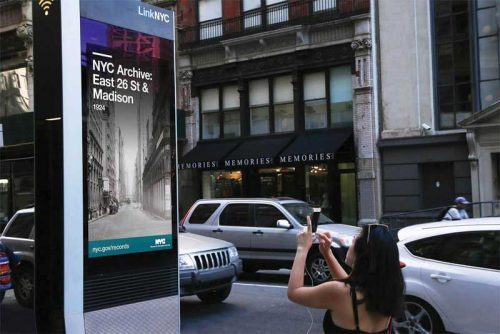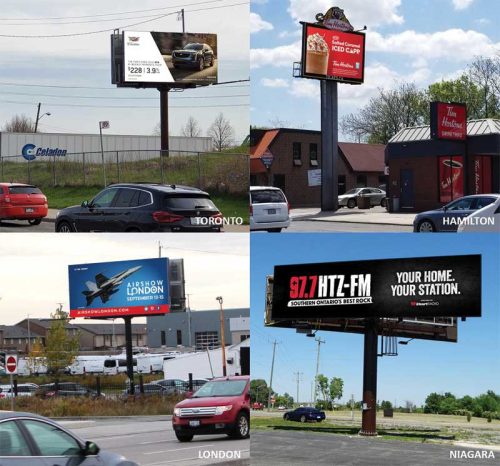The promise of programmatic DOOH will be realized

Interactive screens like the LinkNYC totems showcase how out-of-home (OOH) can integrate with its environment.
Programmatic DOOH has finally arrived. For years, the industry had been anticipating the arrival of programmatic media with mixed feelings. Would enabling programmatic ad sales lead to a loss of control over what appears on a given screen, or lead to inventory devaluation? Would it lead to a new era of hyper-targeted, premium transactions that present better value to a buyer and seller alike? Undoubtedly, the response has been the latter.
Programmatic DOOH transactions are increasing every month and are making efficient, targeted purchases much easier than before. For example, when a mixed martial arts promotion company needed to make a last-minute venue change for its end-of-year event, it was able to simply shift its DOOH advertising’s targeting from place A to B and sell out its new venue in under a week. Likewise, other campaigns—from outdoor advertising to ads delivered inside of commercial buildings—have been successful in harnessing data and on-demand transactions to reach precise audiences at specific times.
This, arguably, is the most important trend to watch over the coming year. More networks are adding their inventory to the programmatic pool, and a growing number of buyers are seeking new markets and opportunities, all of which looks promising.
OOH will get better tied-in with its surroundings

Unlike ads on mobile devices or computers, out-of-home (OOH) exists as part of a physical environment. A billboard is not just a board, but a fixture of a particular geography.
When discussing the benefits of OOH, there is often mention of the fact that there is no fear of an ad being lost below the fold or those that are blocked/skipped. With ad-blockers alone costing U.S. publishers an estimated $15.8 billion in 2017, these are some substantial benefits indeed. There is another crucial advantage. Unlike ads on mobile devices or computers, OOH exists as part of a physical environment. A billboard is not just a board, but a fixture of a particular geography. The same can be said of posters, digital kiosks, and other types of media in the OOH family. Looking ahead, additional technology and planning will certainly help network owners use this strategy to their advantage.
Some of the highest-profile examples of this trend can be found in the rapidly growing smart city segment. Projects like the LinkNYC totems, which deliver free phone calls, Wi-Fi, maps, and other services to passersby are able to do so, thanks to advertising delivered on their OOH displays. The transit sector is another good example, with wayfinding terminals in train stations or on bus shelters serving both as a provider of essential services as well as an advertising medium. Both of these examples thrive because of their utility in the specific locations where the screens exist.
Even static OOH can get in on the act, as exemplified by McDonald’s ‘Follow the Arches’ advertising campaign, which turned careful crops of the brand’s logo into driving directions to a nearby restaurant. That said, the ads were not interchangeable—only specific crops that matched the local outlay of the road would work in this case.
Of course, DOOH has several other applications than just helping customers get from point A to B. In retail settings, interactive screens are used to help shoppers find items, check availability, access loyalty benefits, and even generate special discount codes while shopping. Stores can also tie in point-of-sale (POS) and inventory data to onscreen media that could be used to dynamically change which items are promoted in response to selling trends. Here again, the delivered content is relevant and valuable primarily because of where the screens are located.
For example, a screen that generates discount codes for a clothing brand would not be of much use in a local grocery store.
Looking at OOH in this manner and finding ways to maximize its context through its display locations is one of the best ways to unlock its true value, and is likely to take on increased importance across the industry.





